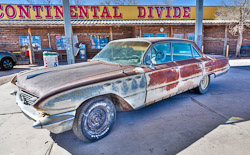FAA Li Battery Ban… what happens on my next trip?
Here it is the 24th of January and as I cruised through the paper at breakfast I came upon a little AP article saying that lithium batteries were under new restrictions by the FAA as of Jan 1. My first reaction was, “what planet have I been living on that I am just hearing about this!?” No, actually my first reaction was, “Oh s**t… I always travel with more than two Li batteries for my camera gear! Now what?!”
I did what any modern day info sleuth does… I googled the ban. OMG… the net is a wondrous thing but it can be very hard to hear the music for all the noise. I finally drilled down to some reliable information that is fairly easy to understand. That’s in stark contrast to what the FAA publishes. As a pilot and engineer for 30+ years I can read and successfully interpret most technical stuff, but FAA rules are in a class by themselves. Let’s not go there.
The bottom line is this… virtually all our camera, cell phone, and laptop batteries fall into the “small” category and as such we are not limited to two batteries as has been reported by various venues. We are limited to 25 grams lithium total, 8 grams carry on and while I won’t get into the calculations here, that is a lot of small batteries. This is taken from the latest DOT brief….
“Common consumer electronics such as digital cameras, cell phones, and most notebook computers are still allowed in carry-on and checked luggage. Moreover, any number of spare batteries for these devices will be allowed in carry-on baggage if they are properly protected from short circuiting and do not exceed 8 grams (~100 watt hours) of equivalent lithium content. Most lithium-ion cell phone and standard notebook computer batteries are below 8 grams (~100 watt hours) of equivalent lithium content. Batteries not installed in electronic devices are not permitted in checked baggage.”
So, no ‘loose’ batteries in checked luggage. They must be in the device they are intended for. (Not a very good idea from a theft point of view, but that’s another issue.) For the spare carry on batteries, tape over the terminals or put them in individual plastic bags. This is to prevent accidental shorting. Lithium is an impressive substance in terms of the heat it can generate when it combusts. I know the terminals on the Canon batteries the 5D and G9 use are recessed… it would take a concerted effort to short them so accidental shorting is virtually impossible no matter where they are flopping around in my camera pack, but the FAA must have a better imagination than me, so isolate and insulate.
If you want to do the math, find the capacity of each battery (usually in tiny print somewhere on the battery), typically expressed in mAh, divide by 1000 to get the amp-hours, then multiply by.3 for grams of Lithium. If your camera battery is 1390 mHa (Canon 20D, 5D) then 1390/1000 x .3 = .42 grams. If I had five of them with me my total would be 2.1 grams…. well under the 8 grams allowed.
Better living through chemistry and our government, who loves us.




































